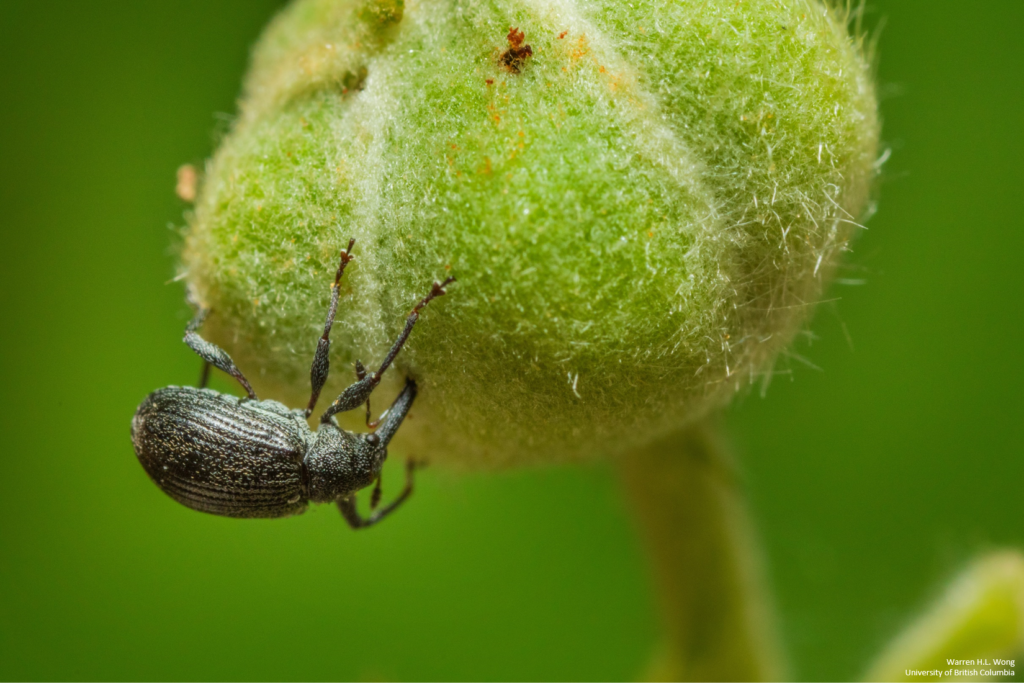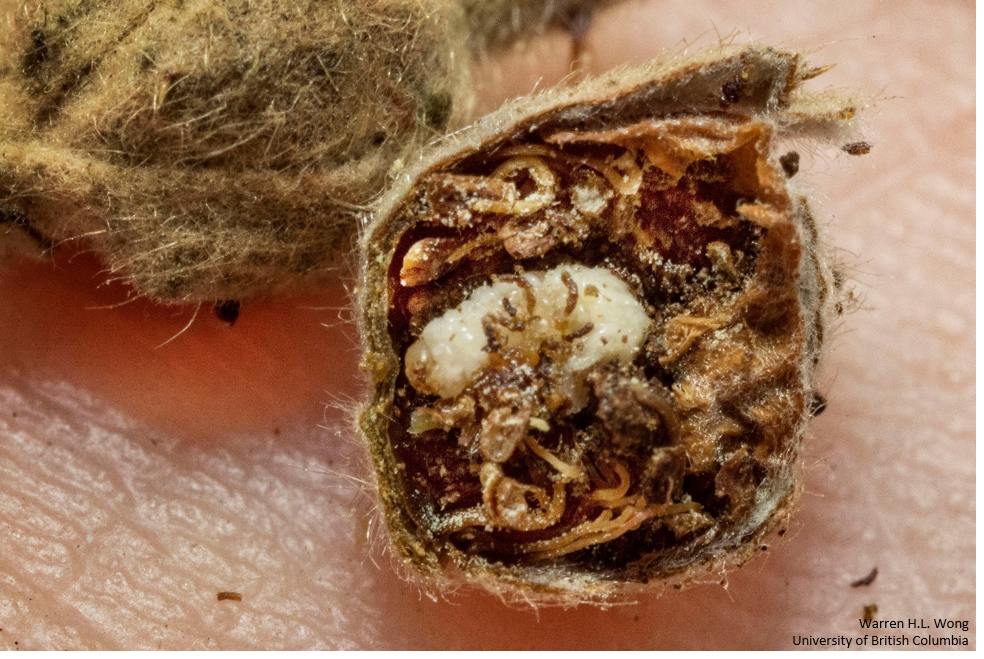This week’s insect, the strawberry blossom weevil (Anthonomus rubi) is a recent invader to British Columbia. It is native to Europe, Asia, and parts of North Africa. As its name implies it is a serious pest of strawberries, however, it does have a much wider host range including many plants in the family Rosaceae – raspberries, blackberries, and roses to name a few.

It was first found in Abbotsford, British Columbia (BC) in 2019 on raspberries and has since been found to be established throughout the Fraser Valley of BC on cultivated and wild host plants. This is the first report of strawberry blossom weevil in North America. Due to the presence of strawberry blossom weevil in BC, the United States Department of Agriculture Animal and Plant Health Inspection Service (APHIS) amended entry requirements for Fragaria, Rubus, and Rosa plants. The USA now requires a phytosanitary certificate to move these plants from Canada into the USA (Federal Order DA-2021-25).
The strawberry blossom weevil lays its eggs in closed buds and clips the stem just below to prevent further bud development.

The egg hatches and the weevil larva develops inside of the damaged bud. Once mature, an adult weevil chews a hole in the bud from which it emerges. It completes a single generation per year. In Europe, bud losses associated with strawberry blossom weevil damage range from 5 to 90% and have led to yield losses over 60%. The strawberry blossom weevil can be confused with the strawberry clipper weevil (Anthonomus signatus) in Canada due to its similar biology and crop damage.

Although there is a historical record of strawberry clipper weevil being in BC, it is primarily a pest in berry crops in eastern Canada and has not been detected during our surveys in 2020-2022 in southwest BC. Adult strawberry blossom weevils are small (2.5-3.0 mm), black, with a small white patch of scales on the scutellum (back), and a long slender rostrum (snout). Larvae, found within damaged buds are c-shaped, with a yellowish-brown head capsule and cream coloured body that grows to 2.5 to 3 mm.
Adult weevils naturally drop when disturbed so they can be detected using beat sampling (tapping) in plants. They are also detectable using yellow sticky cards. Visual surveys for damaged buds with severed stems can also be useful when searching for strawberry blossom weevil.
Although this pest has not been detected to date on the Prairies, a nationwide survey is underway this summer to delineate the distribution of this pest in Canada. In collaboration with Agriculture and Agri-Food Canada, a Story Map has been created to provide an easily digestible summary of the survey underway using pictures, text, and interactive maps all accessible here. We are looking for community-based records of strawberry blossom weevil so, if you would like to get involved, please submit pictures of any suspected strawberry blossom weevil to our iNaturalist project (Anthonomus rubi in North America · iNaturalist).
References:
• Franklin, M. T., Hueppelsheuser, T. K., Abram, P. K., Bouchard, P., Anderson, R. S., & Gibson, G. A. (2021). The Eurasian strawberry blossom weevil, Anthonomus rubi (Herbst, 1795), is established in North America. The Canadian Entomologist, 153(5), 579-585. https://doi.org/10.4039/tce.2021.28
• USDA APHIS | APHIS amends entry requirements for importation of Fragaria spp., Rosa spp., and Rubus spp. plants from Canada into the United States
• Raspberries – Province of British Columbia (gov.bc.ca)
• Anthonomus rubi (strawberry blossom weevil) – Fact sheet – Canadian Food Inspection Agency (canada.ca)
• Strawberry Blossom Weevil – Invasive Species Council of British Columbia (bcinvasives.ca)
